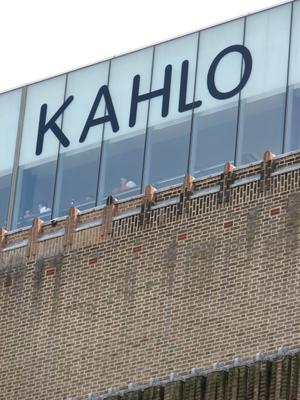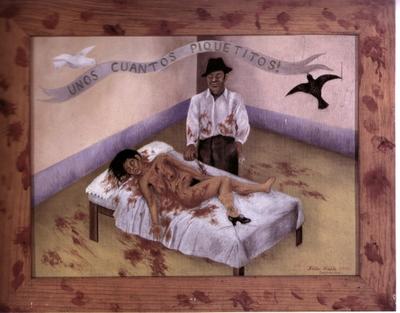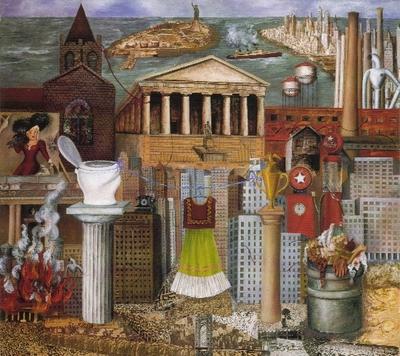Frida

Não tinha visto o filme, não conhecia a biografia; sabia do buço, do acidente, da Mexicanidade - do pouco que se aprende nas diagonais revisteiras dos Domingos. Felizmente que a Tate Modern, essa fortaleza da arte contemporânea encrustada nas margens do Tamisa, oferece outro tipo de leitura domingueira. A exposição Frida Khalo foi uma surpresa agradável, acrescentou o que faltava de devido à imagem folclórica que tinha da arte da Frida Khalo. Levado um pouco ao sabor da expressão «arte naif», termo pelo qual não morro de amores, descubro uma pintura - uma arte - que de ingénuo tem muito pouco e, sobretudo, uma artista que não faz da «condição feminina» um estandarte, mas sim uma mundividência, que se reflecte nas contradições do exterior, mas mais ainda num olhar doloroso (mas orgulhoso) sobre a própria condição individual.
Outra característica da exposição é a organização: o percurso (temático, não cronológico), a qualidade e acessibilidade dos textos, a disposição das salas; elementos que quase passam despercebidos, já que nunca se interpõem entre aquilo que se vê e a maneira como somos levados a observar, o que acaba por ser a melhor constatação do óbvio: que um museu deve interpor-se ao mínimo entre o espectador e a obra (em certos casos, claro). Os textos que se seguem fazem parte do programa.

Rivera later commented that the paintings Kahlo made in 1932 were 'much better than those she executed before losing her baby,' describing her as: 'The only artist in the history of art who tore open her chest and heart to reveal the biological truth of her feelings.' Indeed, Kahlo told a friend that the painting "Unos Quantos Piquetitos", 1935, based on newspaper accounts of a brutal murder, related to her feelings of being 'murdered by life'. Sometime in the previous year, Rivera had embarked upon an affair with her younger sister Cristina, which wounded Kahlo deeply.

My Dress Hangs There, 1933, set amidst the skyscrapers of New York, ridicules the modern American obsession with sport and sanitation by placing a golf trophy and a toilet on top of classical columns. The temple (Federal Hall), with its steps in the form of a sales graph, and the church, with a dollar sign in its window, are dedicated to the worship of mammon. At the centre of the composition is a traditional Mexican dress, of the type Kahlo took to wearing soon after she married Rivera. By adopting regional costume, and through paintings such as these, Kahlo developed her own distinctive brand of Mexicanidad at a time when, post-revolution, the country was rediscovering its pre-Columbian and indigenous heritage.












<< Home